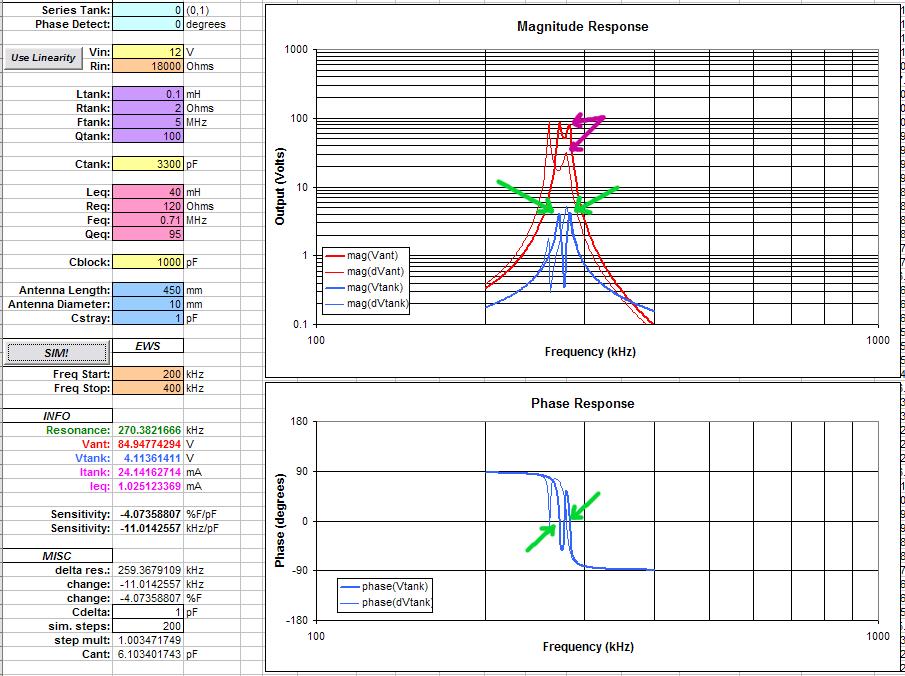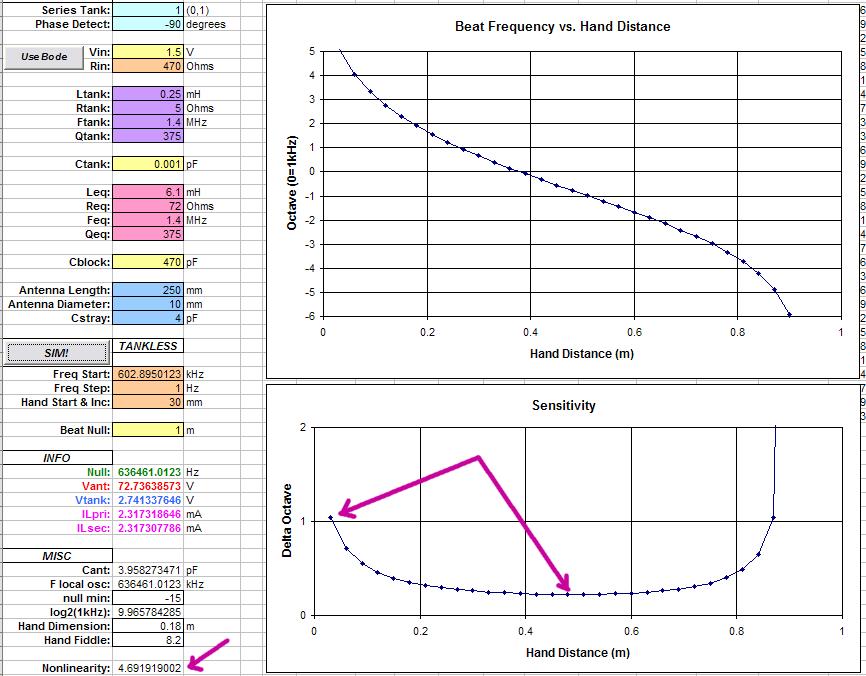I think there is one very significant reason why a theremin greatly benefits from a linear playing interaction: to make the instrument easier to play. And I mean universally easier... this means a person with a moderate facility to play the instrument will have a better experience, and the person who wishes to play with virtuosity on the theremin can also reach higher levels of virtuosity. Everyone will come to agreement when regarding the theremin as one of the most difficult instruments to play well in the entire world of music. If so, then it makes little sense to me, why all ideas for improving the playing experience should not be explored or that they should be abandoned because other highly evolved instruments have a non-linear interfaces that works fine.
Specifically for the theremin from a technical performance point of view, a consistently linear pitch interaction affords a player a great advantage... which is to repurpose memorized motions from one part of the playing range to another part of the range. the end goal is to increase efficiency, reduce the margin of pitch error, and allow a player to focus more on being expressive/musical rather than fighting the interface. However (a big however) this advantage really only applies to theremin players who require precision to a certain degree.
Contrasted with precision playing... To play the theremin with wide interval spacings, relying mostly on arm/body muscle memory rather than hand/finger muscle memory, there would be much less of a need for linearity. the same applies for the theremin playing style of constant wide (arm motion) vibrato, and heavy use of portamento between notes. the reason linearity is not necessary in these circumstances is because the greater margin of error that is permissible (in arm hand finger movements) because errors are much more easily masked.
as with all things, it's both important and necessary for one group of people and completely useless for another group. But in this post, I'd like to focus on why it is important.
for anyone that is unaware, I have been a bassoonist in the past. i played bassoon for ten years and developed to the point where I could call myself proficient. there are many different companies around the world that make good german system bassoons... number one I'd say is German make, Heckel. number two I'd say would be Fox from Indiana, USA.
I personally regard the bassoon as another one of the most difficult instruments to play well in the world of music. I know, from experience, the difference between a poorly made(or average) bassoon and well crafted bassoon.... and what is the biggest difference? The better bassoon is easier to play. The bassoon as an instrument is very old... many people know that. but what many people do not realize is how complex the modern day German system bassoon is. I will just say for brevity, that it is mind bogglingly complex. The French system bassoon is also complex.
getting to the point: if bassoon manufacturers a hundred years ago decided that it was not worth it to improve the design of the bassoon, simply because of technical shortcomings or disagreements with the old systems, then there would be no possibility for virtuosity in modern day bassoon playing because the instrument would be simply be impossible to play without squawking and cracking every other note.
right now, IMO, there seems to be a very low number of people playing with the kind of precision that Clara could play with. being a trained musician definitely helps, but the biggest obstacle IMO is the lack of linear playing interaction. From my observations of her playing and my understanding of my own playing as well as others, I think Clara actually did have a very linear playing interaction with her instrument. No one can prove this today because as each person possesses capacitance changing functions unique to his/her body size, playing technique, etc. even if someone got behind her instrument, he/she would not be able to replicate the interaction that Clara had on the same instrument.
The second biggest obstacle (which is really another topic) is the level of awareness a theremin player has with regard to intonation. it's somewhat relevant here in this topic, because I feel it's really the end goal with making a theremin instrument easier to play. to play the instrument in tune without too much deviation from the intended key or without too much inconsistency with interval width/finger/hand spacings... to play without too much over shooting/undershooting of the pitch jumps, and with as little error masking and correction as possible.
i guess, I would like to just say to the engineers out there, please do not give up on linearity, but be aware that the instrument is only part of a larger equation to obtain a linear playing interaction. It may be a very small crowd of people that is reading these posts, but one day hopefully maybe it will be a bigger crowd of people. and I think everyone's point of view is invaluable when shared... that's IMO how progress is made.
Another topic for later, I just wanted to throw out. I have a great experiment that I would like to try one day when I get enough hobby cash. I would like to put the Etherwave Standard into a variety of custom built housings... then take measurements of the effect the chassis/housing has on linearity. at this time, I am convinced that the EPro and Henk theremins produce the most linear interaction because of their housing.... specifically because of the suspended/isolated pitch antenna. if anyone is interested, and if you have the time and patience, you could perhaps test your theremins sans housing, and observe/report the results. I only have my ePro for now and I'm happy with the way that it plays so I'm not opening it up again. I sold my original EW some time ago, otherwise I'd try this now.
edit: sorry for going off topic on this thread. :P back to you guys.



